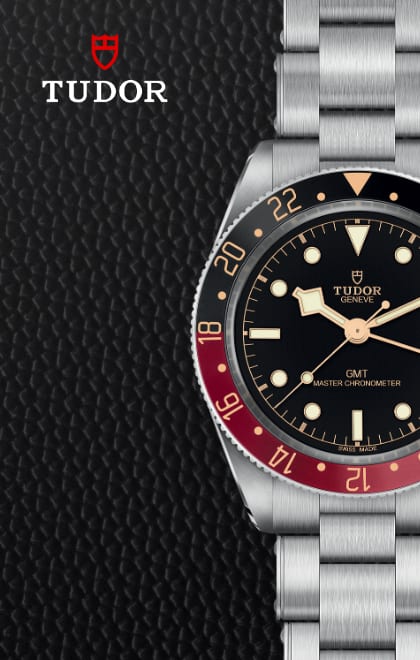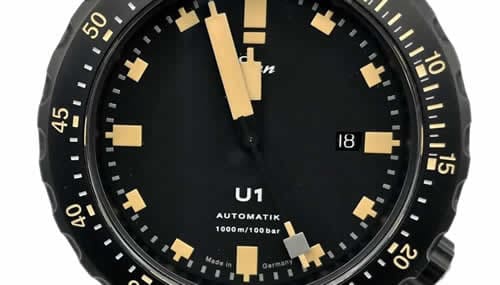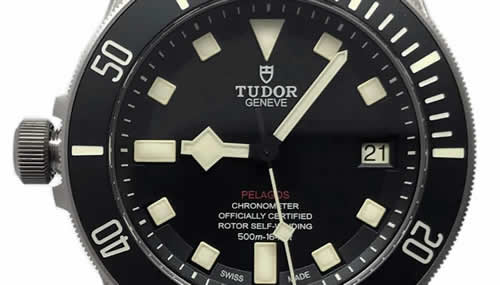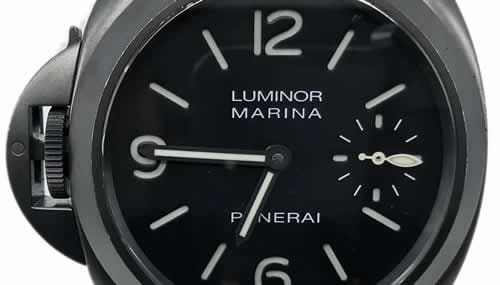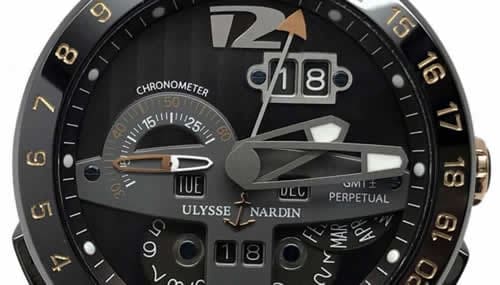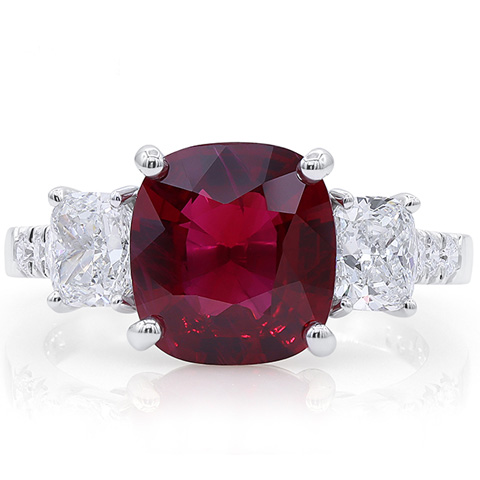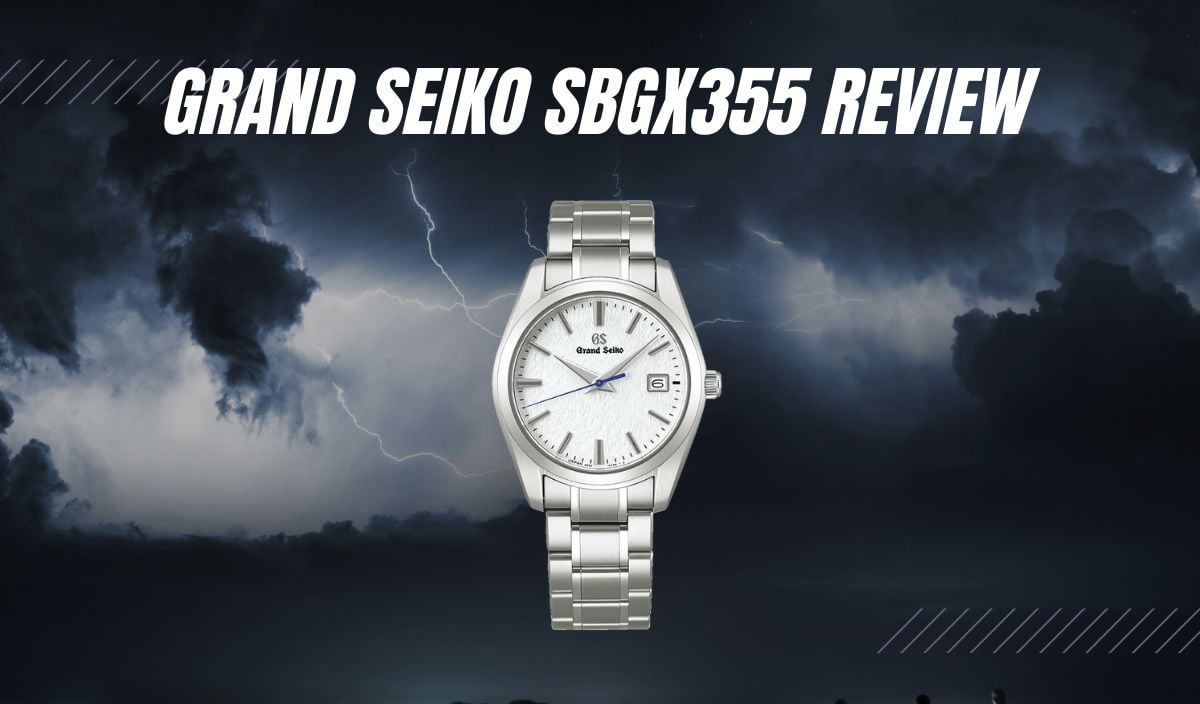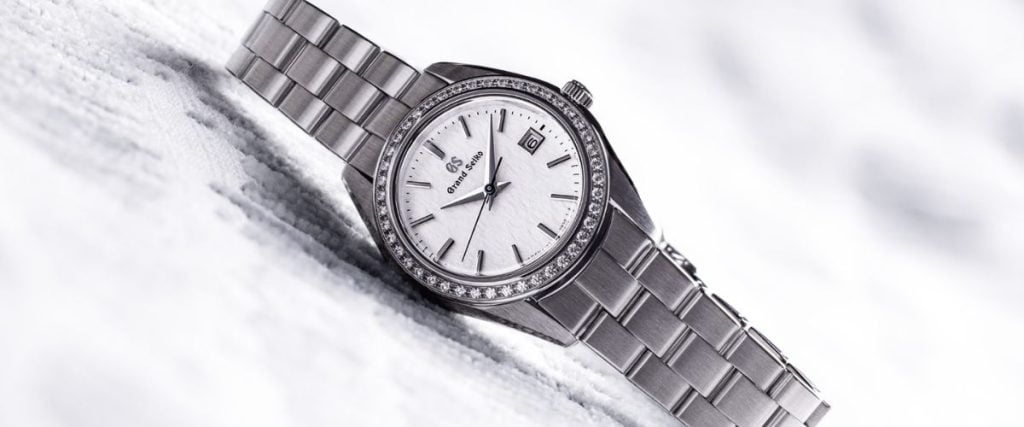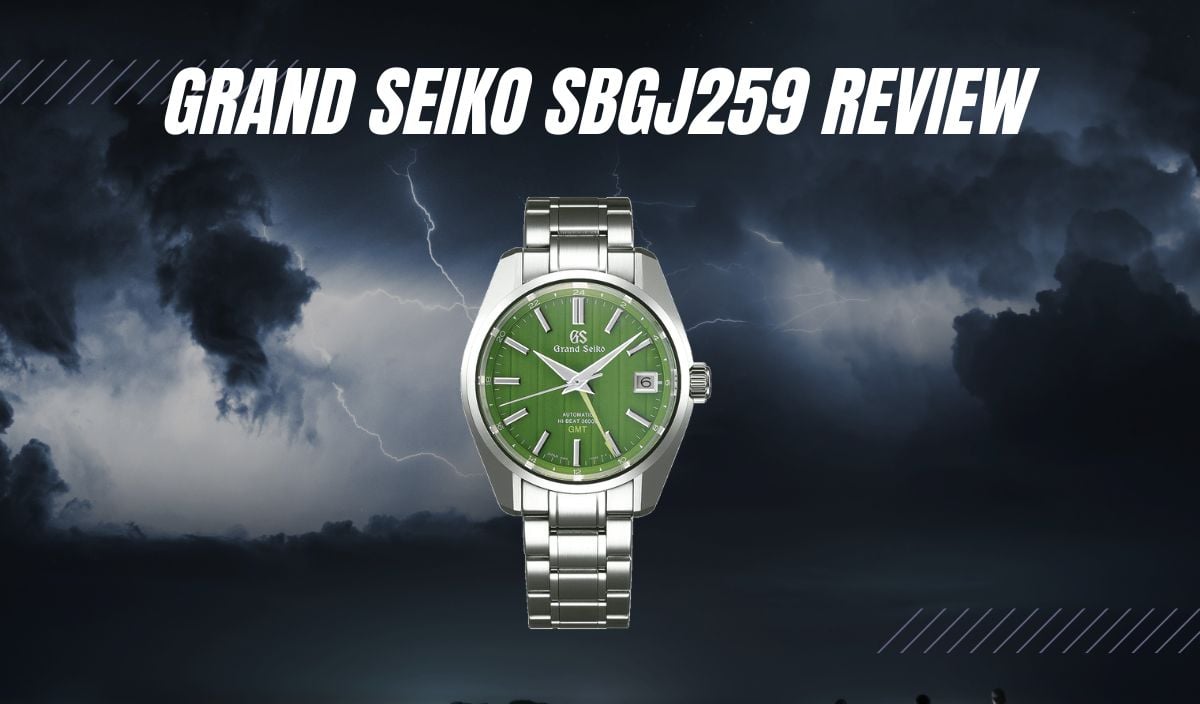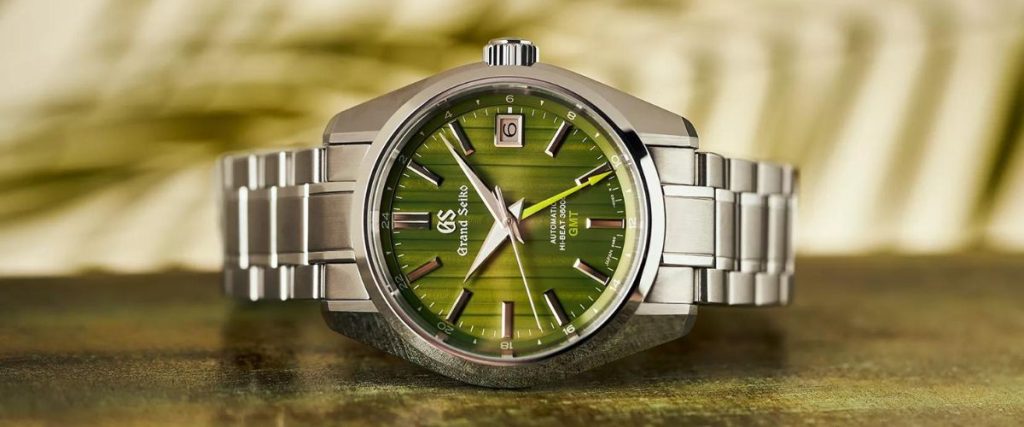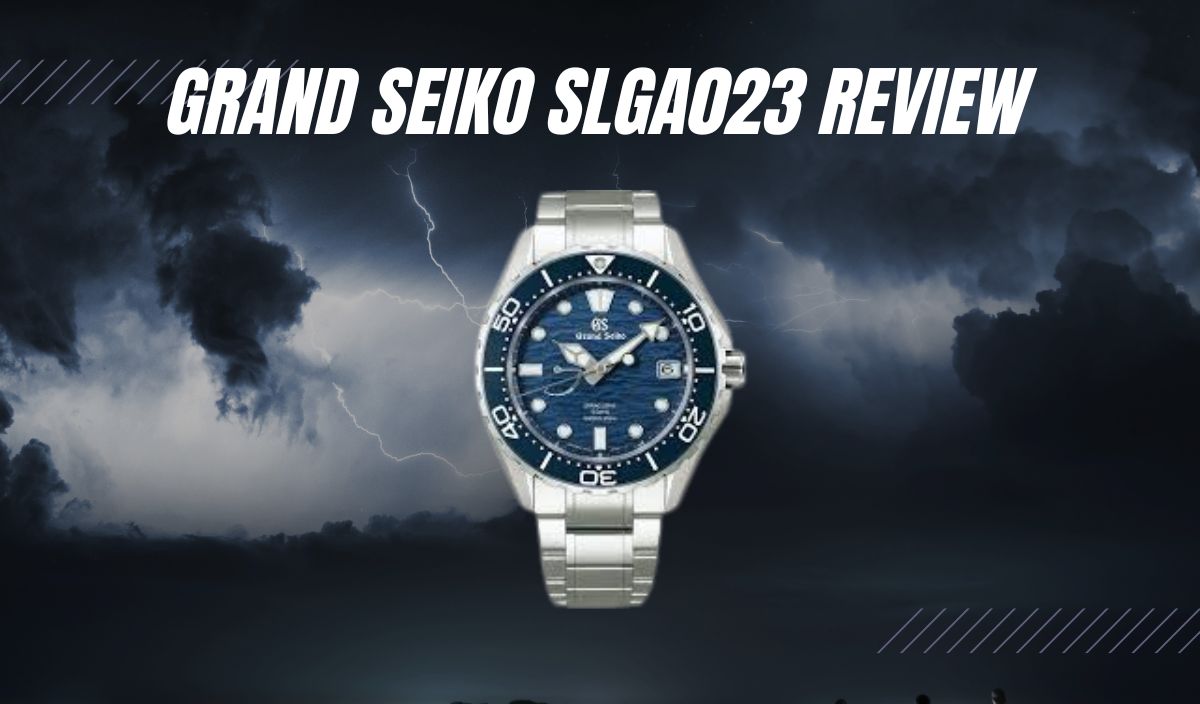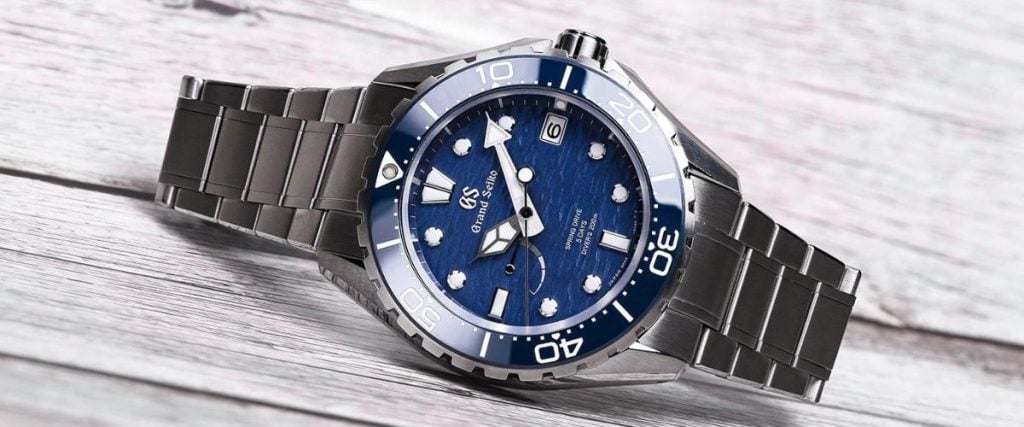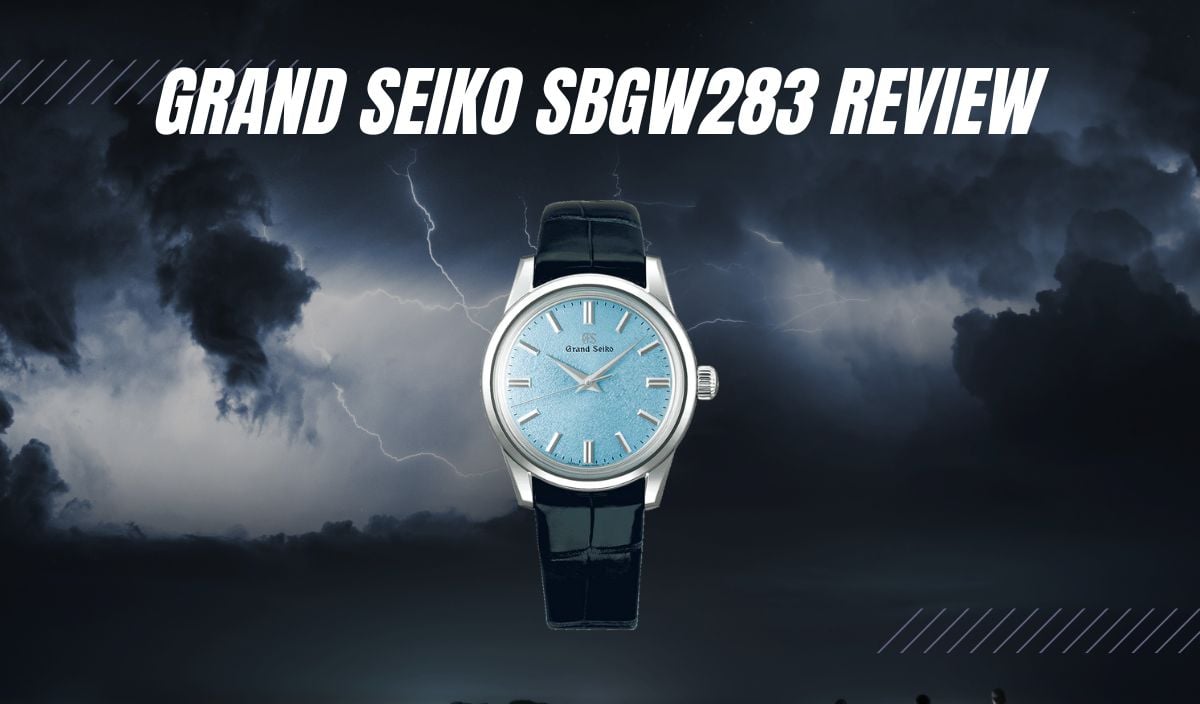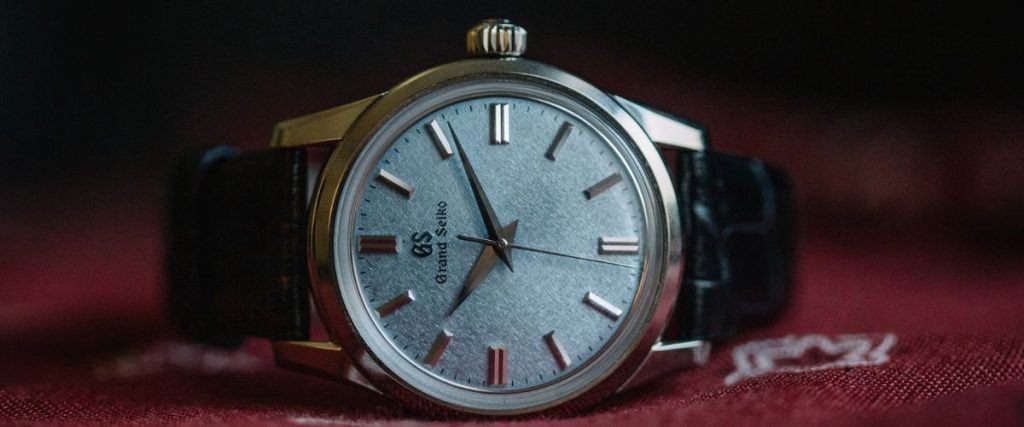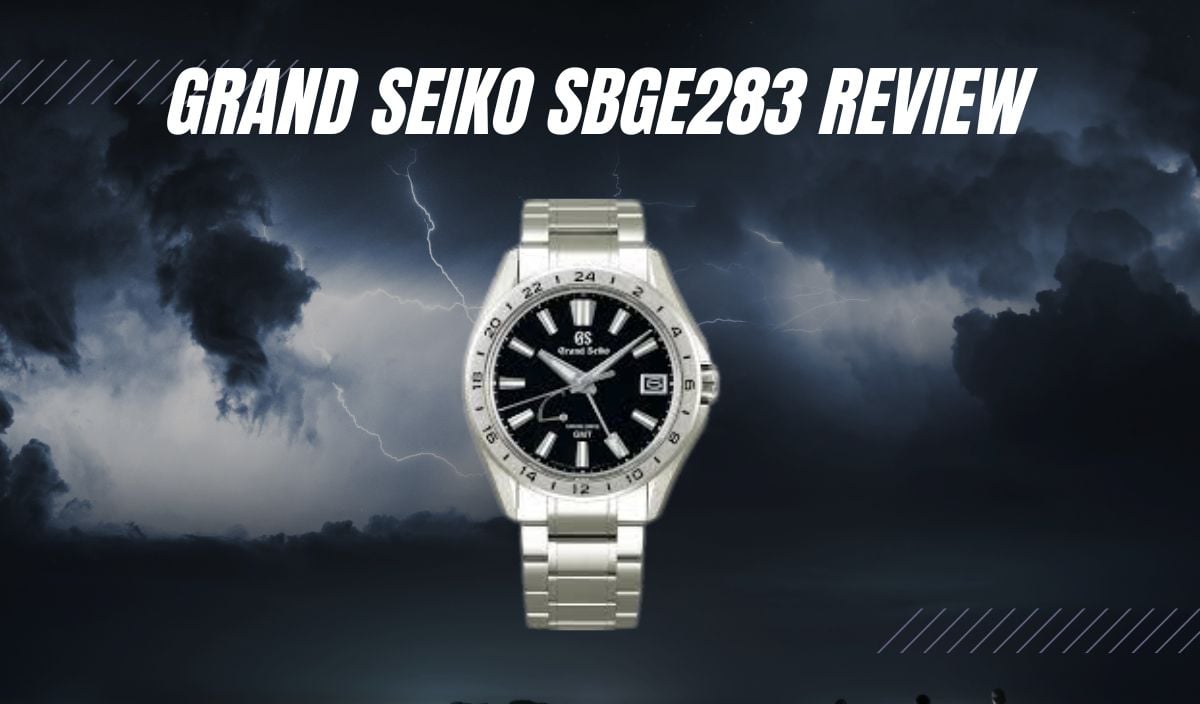
With the introduction of the Evolution 9 collection, Grand Seiko sought to modernize its models and appropriately adapt to changing times by dramatically refining its designs, introducing a theme of contemporary boldness embedded within every piece.
Keeping true to what makes Grand Seiko such an icon while adopting modernized visuals and mechanics, the SBGE283 stands as a testament to how an already timeless brand can continue to be a leading figure in innovation.
Incorporating a GMT hand, allowing a second timezone to be read at a glance, and a Spring Drive movement, which glides swiftly and silently across the dial, this watch deems itself fit for every occasion, as its elegance is only matched by its practicality.
Regarded as the sibling of the popular “Mistflake” watch (aka the SBGE285), the 283 shares many similarities, including being made of the same high-intensity titanium, which causes both watches to feel significantly lighter on the wrist.
They also share the same Spring Drive, GMT features, and very similar measurements. The overall aesthetic is nearly identical, with the only real defining feature of the 283 being that the dial is a darker black compared to the silvery grey of the Mistflake. That being said, these watches were purposely designed to have identical features.
The question of “Which one is better?” boils down to personal preference, style choice, and other outliers. There can’t be a debate on which performs better because they were designed to perform the same. Keep in mind that this review will exclusively focus on the SBGE283, but all of the intricate mechanics, such as movement and measurements, can also be applied to the Mistflake as well.
History
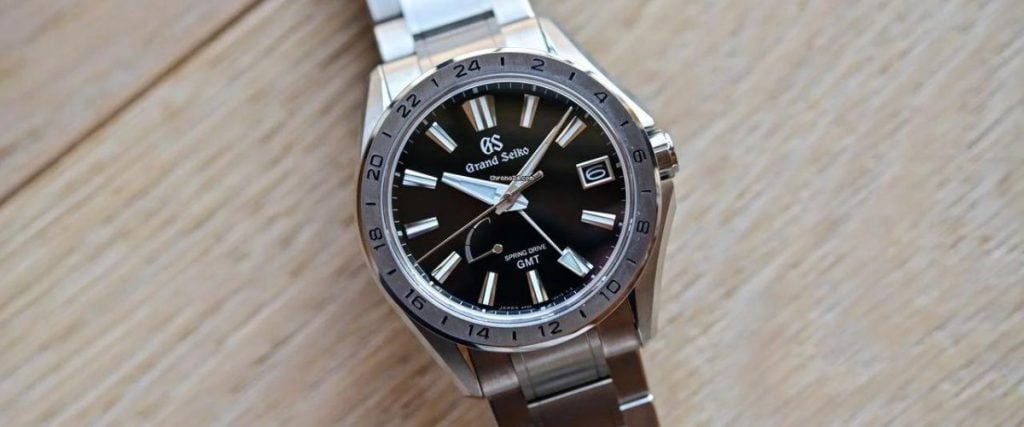
In 2020, the Evolution 9 Style redefined everything we love about Grand Seiko. Keeping the charm found in all Grand Seiko pieces but providing us with a new standard of legibility, comfort, and beauty, the Evolution 9 Style sought to remind a new generation of watch lovers how revolutionary each and every piece strives to be.
Two years later, in August 2022, the SBGE283 joined the Evolution 9 family, further adding to the already breathtaking library. Prioritizing aesthetics, legibility, and comfort, the SBGE283, at its core, aligns with what Grand Seiko aims to achieve with the Evolution 9 collection, which is the self-proclaimed pursuit of precision and mastery, as every piece further reinforces that the most meaningful evolution begins inside.
Case
Let’s start by looking at the high-intensity titanium case. At 41mm in diameter and 13.9mm in thickness, with a 48.3mm lug-to-lug, this watch is on the smaller side compared to similar models, which will serve as a selling point for those who prefer slimmer builds.
The curved drilled lugs give it a unique texture, making the watch appear even smaller while evening out the proportions. They also allow for an easy strap change if you so desire. The material gives it an elegant feel that sets the tone for the entire piece.
The high-intensity titanium is 30% lighter than stainless steel, giving it a lighter look and feel. It is also darker and moodier than its stainless steel counterpart, allowing for a broader range of styles to accompany the piece.
As usual–in Grand Seiko fashion– the finishing is impeccable. The predominantly satin finish contrasts the beveled edges along the case, giving it a subtle flare of elegance. The Evolution 9 series follows the theme of very simply designed bezels that are clearly not the focal point of the piece but serve their purpose all the same by adding an undeniable feel of luxury, as the jet-black font of the numbers perfectly contrasts the crisp titanium background.
The see-through and screw case back allows you to view the intricate movements of the Spring Drive sitting at the heart of the watch, and the signed crown makes it easy to adjust the time and date due to the true GMT movement. The anti-reflective sapphire crystal guards the piece from any unwanted light reflections that threaten to take away from the watch’s aesthetic.
Overall, the lightness of the titanium and the bezel’s beautiful subtlety perfectly complement the jet-black dial, allowing for uncontested legibility and practicality. The slimness of the case will undoubtedly turn a lot of heads as the fine-tuned sharpness and the texture of the lugs are some of the biggest staples of the piece.
Dial
The dial’s deep, rich black serves as a perfect backdrop, making each grand feature shine even brighter than they already do. The Spring Drive fuels the hands as they soar across the frame in a seemingly unstoppable motion, gliding elegantly with pinpoint accuracy. Around the edge, the minute track sits quiet and somber, taking no attention away from the beauty of the hands and backdrop.
The finely hand-finished indices project themselves like bright stars in the blackness of the night, causing easy legibility. The hands and indexes also come equipped with LumiBrite, offering enhanced visibility at night with its glow-in-the-dark feature. The sleek silvery color of the titanium combined with the inky black dial is a perfect recipe that delivers everything Seiko sought to accomplish with this piece.
Nothing crazy, nothing obscene, just pure simplistic beauty, finely crafted so the watchmaker’s work can be known and appreciated wherever you look. The date indicator at 3 and the power reserve indicator at 9 round out the dial in perfect symmetry, while the third hand brings the GMT feature, making it easy to change the date at any given moment.
While the case’s lightweight titanium and slimness are my favorite aspects of this piece, the SBGE283’s dial is one of the most elegant I’ve ever seen. The perfect blend of legibility and simplicity pushes it over the top and rounds out the piece in a well-mannered way that I’ve come to expect from Grand Seiko.
Movement
The iconic Grand Seiko Spring Drive is the most impressive part of the SBGE283. Like every other luxury mechanical watch, it generates energy, but the electronic regulator that delivers a precision that no other mechanical watch can match sets the Spring Drive apart from other mechanical movements.
Grand Seiko has mastered both electronic and mechanical watchmaking, allowing it to nurture both aspects to their full potential. The high torque of a mechanical watch combined with the high precision of an electrical watch allows for a truly groundbreaking combination that the Spring Drive brings to life. The SBGE283 comes with a 9R66 caliber, delivering a power reserve of 72 hours and an accuracy of +15 seconds per month (+1 second per day), which is expected from a Spring Drive.
The pinpoint accuracy allows for the second hand to move flawlessly, never stuttering or slowing. The SBGE283 and many Evolution 9 collections are true testimonies to the Spring Drive’s power. And, of course, the SBGE283 comes equipped with the GMT feature, undoubtedly putting a smile on the face of every world traveler who wants to get their hands on this watch.
The easily adjustable date indicator and time zone add another element of efficiency to the watch movement, making it a more dynamic tool for those who are always on the move. One of the most mechanically sound pieces that Seiko has released, the SBGE283 strives for perfection and goes above and beyond to deliver.
Grand Seiko revolutionized the game with their Spring Drive, and it has become customary to associate the term “flawless” with any piece housing one. As they seek to continuously push for mechanical perfection, it would only make sense for Spring Drive watches to be one of the most highly demanded pieces on the market.
Straps
The titanium bracelet has a three-link design, polished with rolled bevel and a satin finish. The lack of tapering makes it seem wide and slightly disproportionate to the case, and it lacks micro-adjustments to make it fit even better. It does, however, come with two half-links, making for slightly easier adjustments.
Like all Grand Seiko bracelets, the SBGE283 is sized with push pins rather than screws so that you can pop them out to loosen or tighten the bracelet around the wrist, and the drilled lugs make it so that you can easily swap out the straps whenever you feel the need. The bracelet width comes in at 22mm, causing it to fit fairly thickly along the wrist, but the titanium material makes it feel much lighter than a stainless steel variant.
A three-fold clasp with a push button release is a simple guarantee that the watch fits tight and securely around the wrist. The clasp is also engraved with the iconic GS symbol, adding a new level of polish and style.
The titanium material’s value to the entire piece is all the more notable on the bracelet, as the lightweight feel ensures unparalleled comfort while also allowing for a thicker design.
The bracelet itself highlights the entire watch, broadcasting the smooth titanium while also complementing the luxurious case and dial. It executes its purpose perfectly, bringing the modern ideas of the Evolution 9 collection full circle and embodying everything Seiko seeks to achieve.
On The Wrist
As I said, one of the SGE283’s biggest selling points is its lightweight feel on the wrist. It prioritizes comfort and sits securely while also being one of the most stylish pieces in the Evolution 9 family. Despite the 41mm size, the 48.3 mm lug-to-lug and the 13.9mm thickness give it a very comfortable on-the-wrist experience.
It gives off a sporty aesthetic while fitting under most cuffs, fitting like a 40mm watch thanks to the integrated bezel. With a 10-bar water resistance, you’re not going to want to be near any major water sources, but this watch isn’t necessarily made to go deep-sea diving, so if you get caught in a heavy rainstorm, it might be a good idea to cover it under a sleeve.
While the width of the strap is probably my biggest complaint, I feel like the case’s curved lugs and integrated bezel make the watch appear slimmer, while the titanium makes it feel lighter. It’s great for those of you with a wrist size of 6.75 inches to 7.5, although people with larger or smaller wrists could easily adjust it to fit them as well.
A rich, slick silver combined with jet-black is a very simple style choice. But that simplicity is what sets this piece apart. I think that the subtlety of the bezel perfectly contrasts the blackness of the dial, while the silver coloring of the titanium makes the entire aesthetic shine. Not to mention the finely polished surfaces and attention to detail on the hands and indices.
Overall, all these factors make for an incredible on-the-wrist experience, as I found it easy to style with virtually any piece of clothing, which (in my opinion) should always serve as a feature that is prioritized.
The GMT feature makes it efficient for switching time zones at any given moment, while the anti-reflective coating on the inner center removes the glare from the hands and indices, resulting in flawless legibility from any angle.
Price and Availability
You can find the Grand Seiko SBGE283 from authorized dealers, like Exquisite Timepieces. We ship all over the US, and since we are authorized dealers, we offer a five-year warranty directly from Grand Seiko. A brand new Grand Seiko SBGE283 costs $8,400, with pre-owned prices varying from $6-7k depending on condition.
Conclusion
Keeping true to the philosophy of their brand while also making revolutionary changes to fit modern times, Grand Seiko has combined their classic feel and masterful craftsmanship into a contemporary design that will draw the eye of those who prefer a more modern look.
The goal of the Evolution 9 collection was to push the boundaries, setting new standards of practicality and comfort. Ever since they were founded in 1960, Grand Seiko has always sought to be in a league of their own. The Evolution 9 serves as a magnum opus, combining everything they’ve learned from previous releases into one grand collection that takes them one step forward on the never-ending road toward perfection.
Renewing the aesthetics that have been at the core of Grand Seiko for the past 62 years, the SBGE283 perfectly encapsulates everything the Evolution 9 stands for. The sleek craftsmanship and perfectly designed mechanics have made this watch a treasured prize, undoubtedly fueling the interest in similar pieces, as well as cementing the Evolution 9 collection as a monumental testament to the never-ending pursuit of technological evolution.


